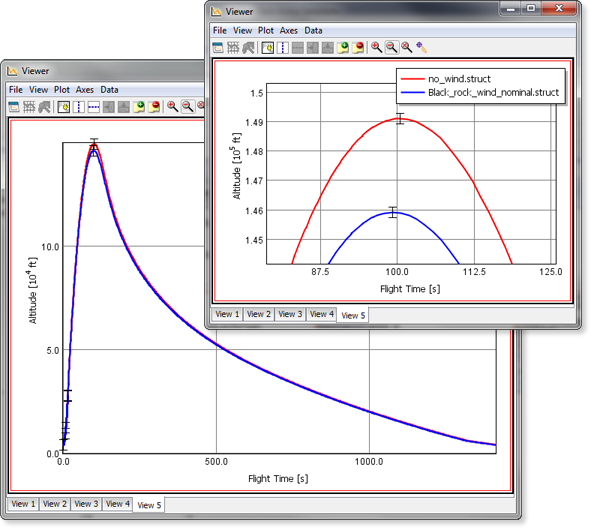
Class 3 Amateur RocketsThe FAA (Federal Aviation Administration) has updated in December 2008 the regulations for amateur rockets [PDF], dividing them in three classes according to the complexity of the vehicles. In order to operate a rocket of class 3, it is required to request a certificate of waiver or authorization. Astos Solutions provides several levels of support in order to accomplish with the FAA regulations.
1. AerodynamicsBased on the dimensions and configuration of the vehicle we can provide an accurate estimation (software tool) of the aerodynamic force and moment coefficients, reference area, reference length and center of pressure position. 2. Nominal trajectoryAstos Solutions provides the information needed for the application, the codes between brackets (e.g. a5) refers to the FAA regulation points [PDF] in paragraph 101.29 (a-b) at page 73782:
See here an output example. Included in this package the customer will receive the ASTOS test case used to simulate the trajectory as well as three month license of ASTOS in order to check the model and perform some modifications. 3. Nominal and not nominal trajectoryNominal information as detailed above plus
See here an output example. Included in this package the customer will receive the ASTOS test case used to simulate the trajectory as well as three month license of ASTOS in order to check the model and perform some modifications. 4. Permanent ASTOS Amateur Rocket Edition licenseThe customer has the possibility to buy a permanent license of ASTOS Amateur Rocket Edition with the following limitations:
ASTOS has been designed to simulate and optimize various aerospace missions,
see ASTOS for more details. An extended knowledge
of aerospace trajectory simulation is expected by the user; that is the reason
why the purchase of an ASTOS license (without a proper preparation) could not
guaranty the success in the simulation of the rocket flight. Required InputsIn order to compute the nominal and not nominal trajectory (see points 2. 3.), the customer has to provide us a list of inputs that define the characteristics of the vehicle. Here after the most typical data are listed:
ValidationThe Student Mavericks Rocket Project, sponsored by Sony, resulted in a successful launch on July 23rd of the two-stage Beagle IV from Black Rock, Nevada. On www.hobbyspace.com it was reported the following: "...According to the GPS data available, a projected trajectory for apogee was over 147000 ft MSL..." This is perfectly in line with the prediction computed with ASTOS (see figure below where the without wind simulation is shown in red and the simulation with typical Black rock wind is shown in blue). The close-up shows the max apogee altitudes: without wind at 149,000 ft and with typical wind at 146,000 ft.
Please contact us at service@astos.de in case of questions or for a specific quotation. |
